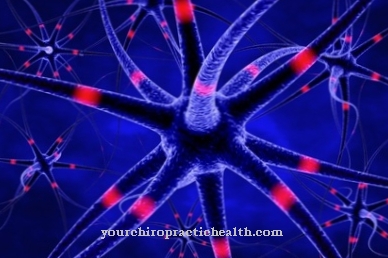The Translation is the last step in the realization of genetic information. Transfer RNA (tRNA) translates strands of messenger RNA (mRNA) into protein sequences. Errors in this translation are also called mutations.
What is translation?

During translation, the genetic code is converted into chains of proteins. The sub-step before translation is also known as transcription. During this transcription, a single-stranded DNA transcript is created. This transcript corresponds to a section of DNA that belongs to a gene. The transcription is carried out by the enzyme RNA polymerase.
The end product of the transcription is the so-called mRNA. This mRNA is read during the subsequent translation. The reading leads to the synthesis of proteins. At the end of the translation, the mRNA was translated into protein chains.
Translation takes place in the ribosome of a cell, i.e. in the cell organelle. It is the last step in the realization of genetic information. The mRNA emerges from the nucleus into the cytoplasm and threads its way into ribosomes.
Function & task
Translation is used to translate an mRNA sequence into a protein sequence. Each mRNA strand consists of a chain of bases. The bases are in triplets, i.e. three consecutive parts. Each base triplet in the mRNA codes for a specific amino acid and is also referred to as a codon.
There are start codons, standard codons and stop codons in the mRNA. The start codon consists of the bases adenine, guanine and uracil. There are three different stop codons, which are abbreviated as UGA, UAG and UAA. They therefore also consist of uracil, guanine and adenine, but in a different order.
A translation always begins at the start codon and always ends at a stop codon. The norm codons are all of the remainder of the base triplets. They each code for a specific amino acid. The start codon AUG codes for methionine. The three stop codons are only intended to end translation and accordingly do not code for amino acids.
In the next step of translation, the transfer RNA plays an important role. This tRNA is a short RNA that transports the correct amino acids to the corresponding codon on the mRNA. tRNA molecules are loaded with amino acids, enzymes and proteins. They help the ribosome translate the mRNA into protein sequences. The protein sequences are built using their smallest components, i.e. the amino acids.
When the tRNA has transported the mRNA to a specific ribosome, it connects the amino acids with other amino acids and in this way forms peptide chains.
tRNA always has several arms. An amino acid binds to one of the arms. Opposite this is the complementary anticodon that belongs to the mRNA base codon. In methionine, for example, the tRNA has the anticodon UAC. This anticodon does not fit on every base triplet, but only on the AUG codon. In this way, the base sequence AUG codes for the amino acid methionine in the mRNA.
Each of the amino acids depends on a special tRNA.Otherwise it cannot be transferred to the associated codon of the mRNA. Which tRNA is responsible for which amino acid results from its anticodon.
In the ribosome, a first tRNA is attached to the mRNA at the start codon. A second tRNA with a special amino acid is stored next to this first tRNA. The amino acids that are now adjacent are linked via a peptide connection.
The first tRNA leaves its amino acid at the arm end of the second and leaves the ribosome. There are now two amino acids on the second tRNA. When the first tRNA has left the ribosome again, a third tRNA with its special amino acid attaches to the mRNA.
The process continues in this way as long as no base triplet with a stop codon appears. As soon as a stop codon appears, the peptide chain becomes detached. The process cannot continue because there is no associated tRNA for stop codons.
Illnesses & ailments
With the incorrect realization of genetic information, diseases can arise. Mutations sometimes occur during translation.
Point mutations are spontaneous or induced changes in the genetic make-up that only affect one nucleobase. Some point mutations have no consequences. This is the case when an amino acid can be encoded by several codons. This may result in the same proteins.
If, on the other hand, one base of the mRNA is replaced with another, the point mutation is also referred to as substitution. In this way, a different amino acid is incorporated in a coding region. In this way, an altered protein is formed that may no longer be able to perform its tasks.
Sickle cell anemia is an example of such a mutation during translation. This is an inherited disease of the red blood cells. Chronic anemia sets in. As a result, organ damage occurs due to lack of oxygen.
However, an mRNA strand can also be shifted during translation. If the reading frame is shifted, the strand loses its actual meaning and its original function. Deletions often occur in this context. That is, bases are lost. An insertion may also occur and bases are added. Deletions and insertions are usually more serious than substitutions and can result in severe malformations or physical dysfunction.
























.jpg)



